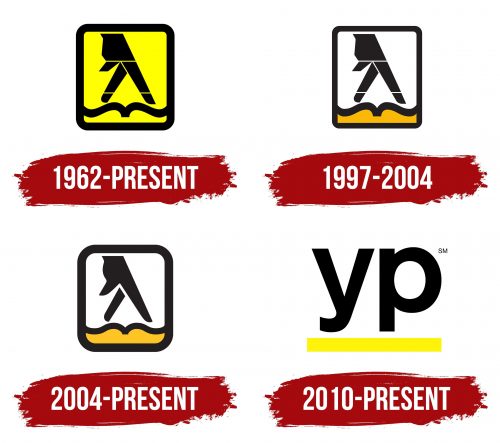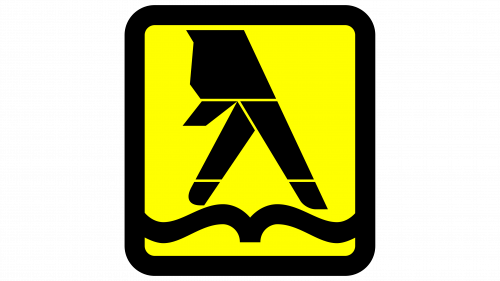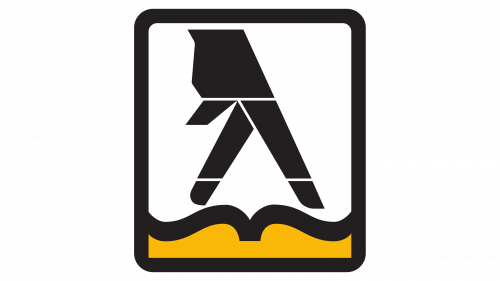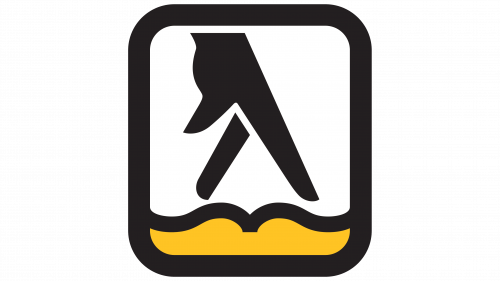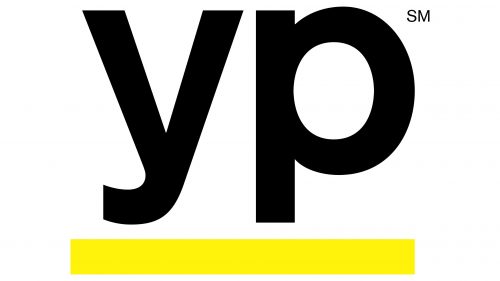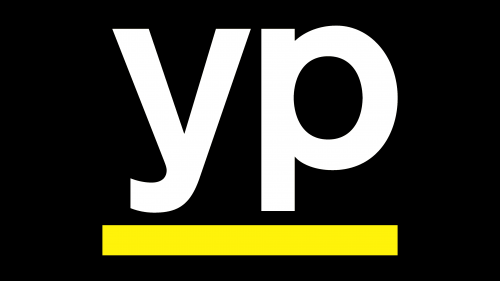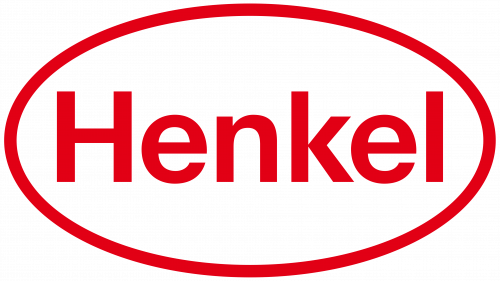The Yellow Pages logo is metaphorical, playful, and friendly. It demonstrates the ease of using phone directories that contain information about well-known companies in the service sector. The emblem has become recognizable worldwide and perfectly serves its function as a marketing tool.
Yellow Pages: Brand overview
In 1883, the Yellow Pages were founded in Cheyenne, Wyoming, in the United States. It all began with an unforeseen issue that a nearby printer encountered. He was publishing a telephone directory when he ran out of white paper and had to print the section on commercial listings on yellow paper.
However, the widespread use of the did not begin until much later. In 1886, a Wyoming telephone company’s advertising department representative named Ransom E. Bett proposed emphasizing commercial listings in Yellow Pages to set them apart from conventional phone numbers. This concept became well-liked very fast.
The company idea started to gain traction in the 1890s in the US. Numerous phone companies began releasing their phone books with a section dedicated to company listings, known as the Yellow Pages.
The format underwent standardization during the 1910s. Most phone providers went with a standard format: yellow pages for business listings and white pages for residential listings.
In the 1920s and 1930s, the directory became a crucial marketing resource for small and medium-sized enterprises. Businesses began actively promoting their products and services through this medium.
The directory’s popularity sharply increased during the 1940s and 1950s. As a result of the post-World War II economic boom, more companies started placing ads in the directories, increasing the volume and diversity of information available in them.
The iconic “Walking Fingers” design, first used in the 1960s, has come to represent the Yellow Pages in numerous nations. Henry Alexander designed this logo for the directory in New England.
The directories reached their zenith in the 1970s and 1980s. Many businesses included directories in their marketing plans, and advertising revenue increased quickly.
The company started its digital revolution in the 1990s. The directories were first made available electronically on CD-ROM and then online.
With the growth of the Internet and search engines in the 2000s, traditional print directories faced new threats. As user and advertiser needs changed, many directory companies started actively building their online platforms.
The company continued its digital transition throughout the 2010s. Many businesses completely shifted from print versions in favor of web and mobile platforms.
The Group changed its name to Yellow Media Inc. in 2011 after going through a rebranding in Canada. This modification aligned with the company’s goal of going beyond traditional print directories and adjusting to the digital era.
2012 saw major changes for numerous divisions worldwide. In the same year, Yellow Pages Limited filed for bankruptcy and restructuring in the United States, following the general trend of print directories becoming less popular in favor of online alternatives.
Hibu, the owner of the directories in the UK, also announced a financial restructuring in 2013 due to high debt and declining print revenue. The company’s structure and strategy underwent significant modifications.
Many nations’ directories aggressively built digital services in 2014 and 2015. To stay relevant in the Internet age, businesses invested in local search services, online directories, and mobile apps.
Sensis, the Australian equivalent of Yellow Pages, sold 70% of Platinum Equity’s shares in 2016 while keeping 30% for Telstra.
In numerous regions, the production of print directories was significantly reduced in 2017 and 2018. For instance, the UK’s directories declared in 2018 that they would no longer publish hardcopy directories following more than 50 years of operation.
Yellow Pages Limited (Canada) carried out its digital transformation in 2019 and concentrated on creating online platforms for small and medium-sized enterprises. The business unveiled several new digital goods, such as improved online marketing and client-facing reputation management capabilities.
Numerous divisions worldwide finished their shift to a digital business model in 2020. Businesses focused on offering digital marketing, online support for small businesses, and local search services.
Continuing its digital transition in 2021, Yellow Pages Limited (Canada) concentrated on platforms for small and medium-sized enterprises. The business introduced YP Dine, a dedicated platform that allows cafés and restaurants to control their web visibility and bookings.
Thryv, formerly known as Yellow Pages in the United States, greatly increased the scope of its digital offerings in 2022. The company bought several software startups focusing on internet marketing tools and CRM systems to provide more complete solutions for small businesses.
In 2023, Sensis, the Australian branch, changed its name to “Thryv Australia.” With this modification, the print directory legacy was finally abandoned, and a complete shift to a digital business model was completed.
In 2024, numerous divisions worldwide concentrated on artificial intelligence advancements. Businesses have started incorporating AI into their systems to improve search algorithms and give consumers personalized platform recommendations.
Meaning and History
What are Yellow Pages?
It is a traditional directory that lists businesses and their contact information, usually grouped by category. Originally, directories were published as large printed books with yellow-colored pages and distributed to residents and businesses, providing a convenient way to find local plumbing, electrical, and restaurant services. With the advent of the Internet, directories moved to digital formats, offering online directories and search services accessible through websites and mobile apps.
1962 – today
Of course, the Yellow Pages emblem contains the color yellow, as without it, the visual identity of a company producing phone directories would be incomplete. Yellow is considered the key element and plays a crucial role in branding, as it is tied to the origins of these printed publications, which first appeared in 1886. At that time, they began printing on cheap yellow paper to reduce costs.
Since then, “Yellow Pages” has been permanently associated with such directories. The designers added black to balance the excessive yellow, convey seriousness, and emphasize the brand’s professional nature, which perfectly offsets the neon brightness. At the same time, it highlights the yellow, making it stand out vividly against the dark background.
The yellow color is used for the base—a rectangular geometric shape stretched vertically and outlined with a wide, rounded border. When viewed from above, looking straight at the cover, its shape resembles a real phone directory. At the bottom, two wavy lines meet in the middle, representing a stylized open book with a dark hand “walking” across it. Essentially, two fingers are “walking” along the book, hinting at the ease of finding information.
The walking hand, dubbed the Walking Fingers, emerged naturally. First and foremost, it is associated with flipping through the directory’s pages to find the desired organization’s phone number. Thin lines run along the hand in two places, dividing the emblem into three sections. They are so narrow that they are barely noticeable against the light background. Meanwhile, the black-on-yellow looks striking, as now it colors the book’s cover, not just the paper on which it is printed.
1997 – 2004
As an experiment during this period, a new format of the Yellow Pages logo was used, featuring a reduced rectangle and a white background. In this case, the visual identity benefited in that it achieved an exact match between the name and the color of the book, which became yellow. In all other respects, however, a visual cacophony emerged. The white space not only clashes with the concept but also limits the use of the logo, as it can no longer be placed on a yellow phone directory cover—it now requires a white background, which disrupts the overall design.
Another inconvenience is the depiction of the hand with two fingers “walking” through the pages, which leaves an impression of segmentation—almost like a cubist drawing. The hand appears divided into several geometric shapes, mostly rectangles and trapezoids.
Overall, the innovations stand out noticeably, distracting from finding the necessary number. For example, the frame has been made thinner, but the thickness of the wavy lines remained the same, making them appear fat and worm-like compared to the delicate outline. The color of the directory was also changed: it was darkened by several shades, bringing it closer to a mustard tone. As a result, only the lower part of the Yellow Pages emblem remained colored.
2004 – today
This version of the Yellow Pages logo is almost identical to the previous one. The key word here is “almost” because significant changes have been made. The emblem’s composition, shape, structure, and concept remain unchanged.
- The vertical rectangle is now shorter and wider, making it appear stable and reliable, hinting at the brand’s longevity.
- The frame is once again bold and thick, with more rounded corners, reflecting a shift toward flexibility and a softer business approach.
- The narrow stripes on the walking hand have been removed, making it solid and unsegmented.
- The outline of the wavy line, representing the open phone directory, has become slightly thinner and more elegant.
- The lower part of the rectangle is colored in a light yellow pastel shade, giving it a pleasant and non-aggressive appearance.
Overall, the emblem has transformed positively, becoming more welcoming, friendly, clearer, lighter, and logical. The latter is due to the removal of the thin lines, which previously divided the fingers and hand into separate segments, but now they are perceived naturally and harmoniously.
The designers maintained the Walking Fingers concept, so the emblem continues to symbolize the ease of finding information in the phone directory. The black-and-yellow palette helps capture users’ attention, as it is based on contrast. Combining these colors is always winning: they work exceptionally well together. The vitality and sunny energy perfectly balance the depth of night’s darkness, leaving a positive impression of the logo.
2010 – today
The owner decided to redesign the Yellow Pages logo to modernize it, resulting in a radical change in its appearance. The walking fingers disappeared from the visual identity, becoming a simple, smooth symbol that looks good on screens at any scale.
The only element retained from the previous version was the color—everything else was removed. Now, the key element of the emblem is the abbreviation. However, it is barely recognizable because lowercase letters were used instead of uppercase ones. The “yp” inscription takes up a separate line and looks very impressive despite being in lowercase. The large glyphs grab attention and highlight the enormous significance of the directory, which contains the phone numbers of current companies providing a wide range of services.
The smooth symbols create an impression of strictness and professionalism. They are even grotesque, with a balanced combination of curves and angles. The smooth curves in the middle of the strokes harmoniously complement the sharp cuts at the ends, and the large internal letter spacing ensures good text readability. In this way, the designer conveyed the openness of a book in which the necessary information is structured.
A wide horizontal strip provides a stylized platform for the name. It is a single, lemon-yellow stripe symbolizing the directory (as if viewed from the side). The new shade looks very fresh and modern, as it is bright enough but not harsh like neon.

